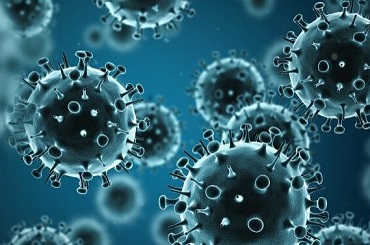H5N1 Can Survive In Various Water Sources Including Sea Water For Up To 12 Days At 22 To 35 Degrees Celsius!
Nikhil Prasad Fact checked by:Thailand Medical News Team Apr 24, 2024 1 year, 8 months, 14 hours, 48 minutes ago
H5N1 News: The persistence of pathogens in environmental reservoirs, especially water sources, poses significant challenges for public health. Among these pathogens, the H5N1 Avian Influenza Virus (AIV) has garnered particular attention due to its potential to cause severe disease in birds and humans alike. A study conducted in 2011 by the Cantacuzino NIRDMI, National Influenza Center in Romania that is covered in this
H5N1 News report, delved into the survival of H5N1 in various water sources and explored effective methods for its inactivation.
 H5N1 Can Survive In Various Water Sources Including Sea Water
H5N1 Can Survive In Various Water Sources Including Sea Water
For Up To 12 Days
Understanding H5N1 Survival Dynamics
The study utilized an experimental model with a non-pathogenic avian reassortant to assess the survival of H5N1 AIV in surface water. The infectivity of the virus was measured using TCID50 (Tissue Culture Infective Dose 50) at different intervals across three distinct types of water. This approach aimed to mimic real-world conditions and evaluate the potential risk of viral transmission through water sources.
The findings revealed that H5N1 AIV exhibited remarkable persistence in aquatic environments. Specifically, the virus remained infective for up to 12 days when subjected to temperatures ranging from 22 to 35 degrees Celsius. Even at lower temperatures of 4 degrees Celsius, H5N1 retained infectivity for an extended period, lasting up to 20 days. This longevity underscores the resilience of the virus in diverse water temperatures, highlighting a concerning aspect of its environmental viability.
Implications for Transmission and Contamination
The study's results carry significant implications for understanding the pathways of H5N1 transmission. The prolonged survival of the virus in water suggests a potential mechanism for bird-to-bird transmission and raises concerns about contamination of household water supplies through shared water sources. These findings emphasize the need for robust biosecurity measures, especially in regions where avian influenza outbreaks are prevalent.
Furthermore, the study observed a notable decrease in H5N1 persistence in sea water after 12 days at 35 degrees Celsius. This observation underscores the influence of environmental factors, such as water salinity and temperature, on viral viability. Such insights are crucial for assessing the broader ecological context of AIV transmission and devising targeted mitigation strategies.
Inactivation Methods: Chemical Approaches
In addition to studying H5N1 survival, the research explored the efficacy of chemical methods in inactivating the virus. Various chemicals were tested for their ability to neutralize AIV infectivity, providing valuable insights into potential decontamination strategies.
The study identified two commercially available products, namely glutaraldehyde and penta potassium bis (peroxy mono sulphate) bis(sulphate), as effective inactivators of
H5N1 AIV. These chemicals demonstrated rapid and safe decontamination capabilities, offering a promising avenue for implementing biosafety measures in laboratory settings and farms vulnerable to avian influenza.
Conclusion: Mitigating Risks and Enhancing Biosecurity
In conclusion, the study sheds light on the persistence of H5N1 AIV in water and underscores the importance of proactive measures to mitigate transmission risks. By understanding the survival dynamics of the virus and leveraging effective chemical inactivation methods, stakeholders can bolster biosecurity protocols and safeguard against potential outbreaks.
Moving forward, continued research and collaborative efforts are essential to refine strategies for combating avian influenza and addressing its environmental reservoirs. Implementing robust surveillance, rapid response mechanisms, and targeted interventions will be instrumental in protecting both animal and human populations from the threat of H5N1 and other emerging pathogens.
The study findings were published in the peer reviewed journal: Romanian Archives of Microbiology and Immunology.
https://pubmed.ncbi.nlm.nih.gov/22106514/
For the latest
H5N1 News, keep on logging to Thailand Medical News.
